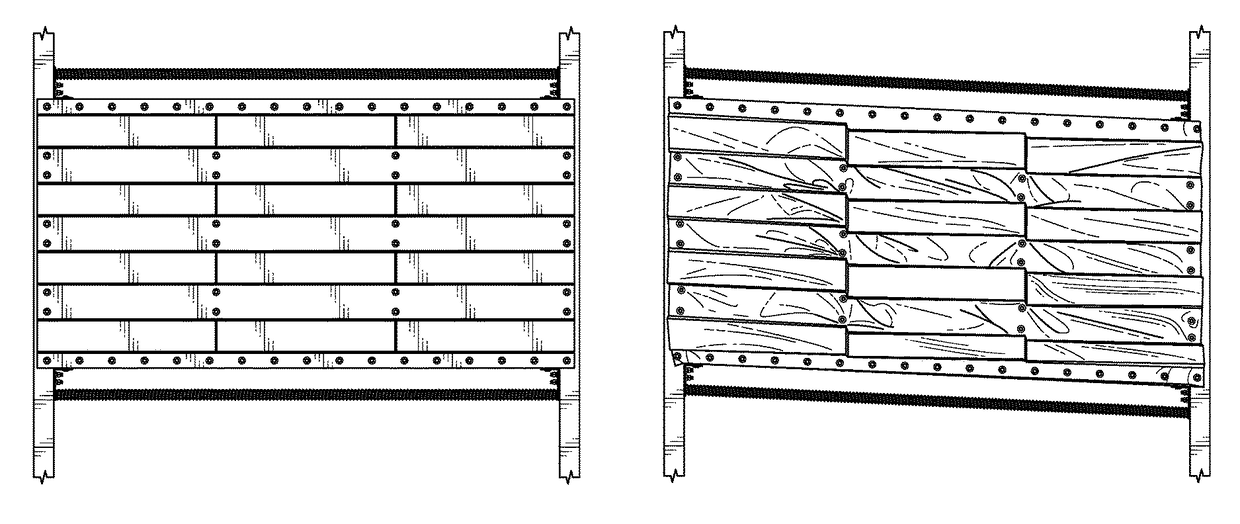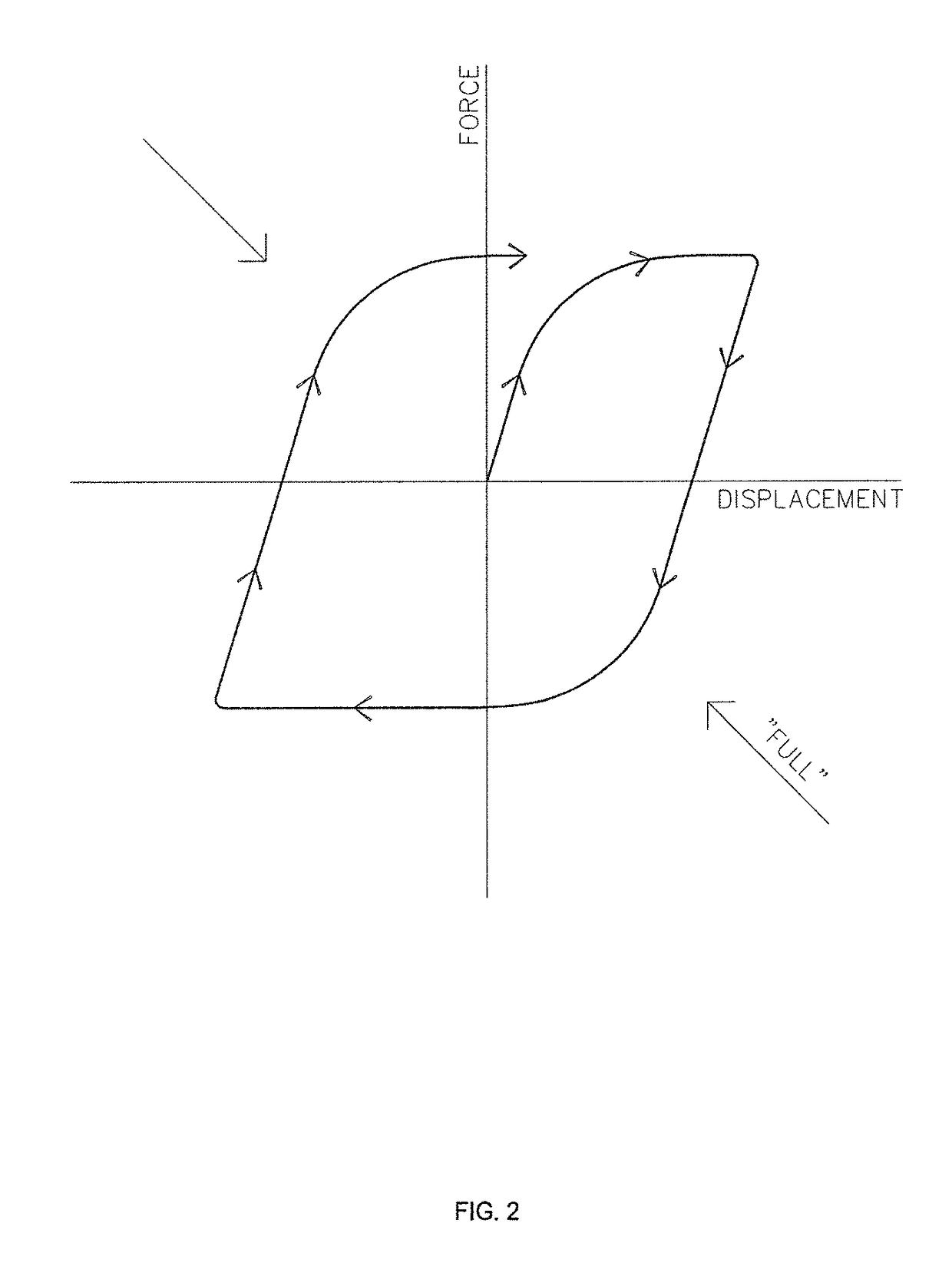Wall sheathing with passive energy dissipation
a technology of passive energy dissipation and wall sheathing, which is applied in the field of wall sheathing, can solve the problems of limited displacement capacity, limited energy dissipation of wall panels, and increase ductility, and achieve the effect of increasing passive energy dissipation
- Summary
- Abstract
- Description
- Claims
- Application Information
AI Technical Summary
Benefits of technology
Problems solved by technology
Method used
Image
Examples
Embodiment Construction
[0046]Many embodiments described below can be utilized as wall sheathing to resist external excitations such as wind or earthquake of light-framed wall structures.
[0047]I. Exemplary Shear Panel
[0048]In many embodiments, sheet metal is cold-formed to create a recurring corrugation pattern across the width of the sheet. This corrugation pattern is referred to as the sheet profile and consists of top flutes, bottom flutes, and webs as illustrated in FIG. 7.
[0049]In many embodiments, the slope of the profile web, as defined by the angle (a) illustrated in FIG. 7, is set to insure that the top flutes deform laterally and yield at the end of the flute, as illustrated in FIG. 8, before any basic failure mode occurs thus providing a full hysteresis loop. Ideally, this angle would be set at 0°; however, shipping and handling of the product will, in all likelihood, necessitate that the angle be greater than 0°. It should be noted that as the angle increases, the stiffness of the flute increas...
PUM
| Property | Measurement | Unit |
|---|---|---|
| angle | aaaaa | aaaaa |
| yield strength | aaaaa | aaaaa |
| angle | aaaaa | aaaaa |
Abstract
Description
Claims
Application Information
 Login to View More
Login to View More - R&D
- Intellectual Property
- Life Sciences
- Materials
- Tech Scout
- Unparalleled Data Quality
- Higher Quality Content
- 60% Fewer Hallucinations
Browse by: Latest US Patents, China's latest patents, Technical Efficacy Thesaurus, Application Domain, Technology Topic, Popular Technical Reports.
© 2025 PatSnap. All rights reserved.Legal|Privacy policy|Modern Slavery Act Transparency Statement|Sitemap|About US| Contact US: help@patsnap.com



